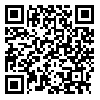BibTeX | RIS | EndNote | Medlars | ProCite | Reference Manager | RefWorks
Send citation to:
URL: http://rjms.iums.ac.ir/article-1-1451-en.html
Background & Aim: Most acute humeral shaft fractures can be successfully treated by conservative methods. Operation is recommended for certain fractures. Intramedullary nailing offers a dependable solution for the treatment of humeral shaft fractures, especially in polytrauma patients. The aim of this study was to evaluate intramedullary nailing outcomes and complications in humeral fractures.
Patients and Method: This descriptive study involved all skeletally mature patients with acute humeral shaft fractures requiring surgical stabilization who were admitted to university-affiliated hospitals from 2003 to 2007. 27 humeral shaft fractures (17 men and 10 women) were treated with intramedullary nailing. Clinical outcome measurements included fracture healing, radial nerve recovery, infection, and elbow and shoulder discomfort. Radiographic measurements included fracture alignment, delayed :::union:::, and non:::union:::. After gathering all data , they were analyzed by descriptive tests in SPSS.
Results: Patients with the mean age of 37.5 years (17 men and 10 women) were enrolled in this study. Fracture :::union::: was achieved in 96.3% of our cases, while function was excellent or good in 88.9% of the cases. There were no complications such as infection, malalignment, loss of fixation, and device failure.
Conclusion: Humeral locked nailing offers a less invasive surgical technique and more favorable treatment especially in multiple traumas.





